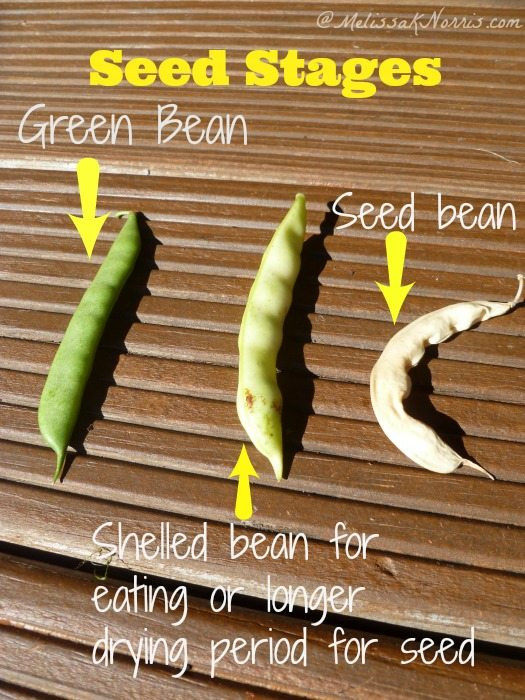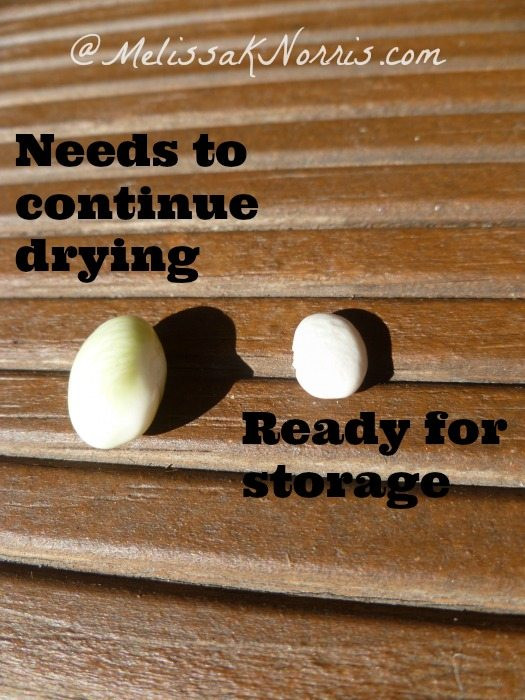Saving green bean seeds is a fantastic way to cut costs, cultivate self-sufficiency, and preserve your favorite varieties. At savewhere.net, we’re dedicated to helping you unlock simple, effective methods to manage your finances and live more sustainably. This guide provides an easy way to save green bean seeds, ensures you get high germination rates, and helps maintain genetic diversity in your garden.
1. Why Save Green Bean Seeds?
Saving green bean seeds isn’t just about saving money; it’s about connecting with the tradition of gardening and ensuring the continuation of unique varieties. Here’s why you should consider saving your green bean seeds:
- Cost Savings: Purchasing new seeds every year can be expensive. Saving your own seeds eliminates this cost.
- Self-Sufficiency: Being able to produce your own seeds promotes self-reliance and reduces your dependence on external suppliers.
- Preservation of Heirloom Varieties: Saving seeds helps preserve heirloom varieties, which are often more flavorful and adapted to local growing conditions.
- Adaptation to Local Conditions: Seeds saved from plants that thrive in your garden are more likely to produce successful crops in subsequent years.
- Genetic Diversity: Saving seeds from multiple plants helps maintain genetic diversity, making your crops more resilient to pests and diseases.
2. Understanding Heirloom vs. Hybrid Seeds
Before you start saving seeds, it’s essential to understand the difference between heirloom and hybrid seeds. According to Melissa Knorris, only seeds from heirloom plants can be reliably saved.
- Heirloom Seeds: These are open-pollinated varieties that have been passed down for generations. They produce plants that are true to type, meaning the seeds will yield plants with the same characteristics as the parent plant.
- Hybrid Seeds: These are created by cross-pollinating two different parent plants. While they may offer desirable traits like disease resistance or high yield, their seeds will not produce plants that are true to type. Saving seeds from hybrid plants can result in unpredictable outcomes.
3. Identifying the Right Green Beans for Seed Saving
Not all green beans are created equal when it comes to seed saving. Here’s what to look for:
- Heirloom Varieties: Choose heirloom varieties like ‘Kentucky Wonder’, ‘Blue Lake’, or ‘Tarheel Green Beans’ for reliable seed saving.
- Healthy Plants: Select seeds from the healthiest plants in your garden, free from disease and pests.
- Desirable Traits: Pick plants that exhibit the traits you want to preserve, such as high yield, disease resistance, or unique flavor.
4. Step-by-Step Guide to Saving Green Bean Seeds
Saving green bean seeds is a straightforward process. Here’s a detailed guide to help you succeed:
4.1. Allow Pods to Mature
- Let the Beans Mature: Instead of harvesting all your green beans for eating, allow some pods to remain on the vine until they are fully mature.
- Observe the Changes: The pods will turn from green to yellow or brown and become dry and brittle. The beans inside will become large and hard.
 Mature Green Bean Pods Ready for Seed Saving
Mature Green Bean Pods Ready for Seed Saving
4.2. Harvest the Pods
- Timing is Key: Harvest the pods when they are completely dry and brittle. If you live in an area with wet weather, you may need to harvest the pods before they are fully dry and allow them to dry indoors.
- Gentle Handling: Carefully remove the pods from the vine to avoid damaging the seeds.
4.3. Dry the Pods
- Indoor Drying: If the pods are not completely dry, spread them out on a tray or screen in a well-ventilated area.
- Sun Drying: In dry climates, you can dry the pods in the sun. Place them on a clean surface and turn them regularly.
4.4. Shell the Beans
- Open the Pods: Once the pods are completely dry, shell the beans by hand. Simply crack open the pods and remove the beans.
- Inspect the Beans: Discard any beans that are damaged, discolored, or show signs of mold or disease.
4.5. Dry the Seeds
- Spread Them Out: Place the seeds on a cookie sheet or tray, ensuring they are not touching each other. This allows for good air circulation.
- Monitor for Mold: Check the seeds every three days, discarding any that show signs of mold.
4.6. Test for Dryness
- Fingernail Test: Once the beans are on the cookie sheet for three days test by trying to nick a seed with your fingernail. If it leaves a mark, the beans needs to dry further.
4.7. Store the Seeds
- Airtight Containers: Store the dried seeds in airtight containers, such as glass jars or plastic containers.
- Cool, Dark Place: Keep the containers in a cool, dark, and dry place to maintain seed viability. A pantry, basement, or refrigerator (in an airtight container) are good options.
- Labeling: Label each container with the variety of green bean and the date of harvest.
 Dried Green Bean Seeds Ready for Storage
Dried Green Bean Seeds Ready for Storage
5. Ensuring Seed Viability
To ensure your saved green bean seeds are viable, follow these tips:
- Proper Drying: Thoroughly dry the seeds before storing them to prevent mold and decay.
- Cool Storage: Store the seeds in a cool place to slow down the aging process.
- Dark Storage: Keep the seeds in a dark place to protect them from light, which can reduce viability.
- Airtight Containers: Use airtight containers to prevent moisture from damaging the seeds.
6. Testing Seed Germination
Before planting your saved seeds, it’s a good idea to test their germination rate. This will give you an idea of how many seeds to plant to achieve your desired crop yield.
- Gather Supplies: You’ll need a damp paper towel, a plastic bag, and your saved seeds.
- Place Seeds on Paper Towel: Moisten the paper towel and place 10-20 seeds on one half of the towel.
- Fold and Seal: Fold the other half of the paper towel over the seeds and place the towel in a plastic bag. Seal the bag to maintain moisture.
- Wait and Observe: Place the bag in a warm location and wait 7-10 days. Check the paper towel regularly to ensure it remains damp.
- Count Germinated Seeds: After 7-10 days, count the number of seeds that have sprouted. This will give you an estimate of your seed germination rate.
- Calculate Germination Rate: If 15 out of 20 seeds sprout, your germination rate is 75%.
7. Common Mistakes to Avoid When Saving Green Bean Seeds
To ensure successful seed saving, avoid these common mistakes:
- Saving Seeds from Hybrid Plants: Only save seeds from heirloom varieties to ensure true-to-type plants.
- Not Allowing Pods to Fully Mature: Make sure the pods are completely dry and brittle before harvesting.
- Improper Drying: Thoroughly dry the seeds to prevent mold and decay.
- Poor Storage Conditions: Store seeds in a cool, dark, and dry place to maintain viability.
- Saving Seeds from Diseased Plants: Only save seeds from healthy plants to avoid passing on diseases to future generations.
8. How to Plant Saved Green Bean Seeds
Planting saved green bean seeds is similar to planting commercially purchased seeds. Here are some tips for success:
- Timing: Plant green bean seeds after the last frost when the soil has warmed up to at least 60°F (15°C).
- Soil Preparation: Choose a sunny location with well-drained soil. Amend the soil with compost or other organic matter to improve fertility.
- Planting Depth: Plant seeds about 1 inch (2.5 cm) deep and 2-3 inches (5-7.5 cm) apart.
- Watering: Keep the soil consistently moist until the seeds germinate.
- Support: Provide support for climbing varieties, such as trellises or stakes.
9. Troubleshooting Common Problems
Even with the best practices, you may encounter some problems when saving and planting green bean seeds. Here are some common issues and how to address them:
- Low Germination Rate: This could be due to improper drying, poor storage conditions, or old seeds. Test the germination rate before planting and adjust your planting density accordingly.
- Moldy Seeds: This is usually caused by insufficient drying or storing seeds in a humid environment. Discard any moldy seeds and ensure proper drying and storage in the future.
- Diseased Plants: If your plants show signs of disease, do not save seeds from them. Choose seeds from healthy plants and practice crop rotation to prevent the buildup of soilborne diseases.
- Pest Infestation: Protect your plants from pests by using organic pest control methods, such as companion planting, beneficial insects, and natural insecticides.
10. Why Choose SaveWhere.net for Your Savings Needs?
At savewhere.net, we understand the importance of financial responsibility and sustainable living. We provide resources and tips to help you save money, reduce waste, and live a more fulfilling life. By saving your own green bean seeds, you’re taking a step towards self-sufficiency and reducing your environmental impact.
10.1. Save Money
One of the primary benefits of saving seeds is the money you save. Instead of purchasing new seeds every year, you can use the seeds you’ve saved from your own garden. This can add up to significant savings over time, especially if you grow a variety of vegetables and flowers.
10.2. Promote Sustainability
Saving seeds promotes sustainability by reducing the demand for commercially produced seeds. Commercial seed production often involves the use of pesticides, herbicides, and other chemicals that can harm the environment. By saving your own seeds, you’re reducing your reliance on these practices and supporting a more sustainable food system.
10.3. Preserve Heirloom Varieties
Heirloom varieties are open-pollinated plants that have been passed down for generations. These varieties often have unique flavors, colors, and textures that are not found in modern hybrid varieties. By saving seeds from heirloom plants, you’re helping to preserve these valuable genetic resources for future generations.
10.4. Adapt to Local Conditions
When you save seeds from plants that have grown successfully in your garden, you’re selecting for traits that are well-suited to your local climate and soil conditions. Over time, these seeds will become even better adapted to your garden, producing more reliable and abundant crops.
10.5. Increase Self-Sufficiency
Saving seeds is a great way to increase your self-sufficiency and reduce your dependence on external suppliers. By growing your own seeds, you’re taking control of your food supply and becoming more resilient to economic and environmental changes.
11. Additional Tips for Successful Seed Saving
Here are some additional tips to help you succeed with seed saving:
- Start Small: If you’re new to seed saving, start with a few easy-to-save crops like beans, peas, or tomatoes.
- Join a Seed Saving Group: Connect with other seed savers in your community to share knowledge, seeds, and resources.
- Attend Workshops and Seminars: Learn from experts by attending workshops and seminars on seed saving techniques.
- Read Books and Articles: Expand your knowledge by reading books and articles on seed saving and gardening.
- Keep Records: Keep detailed records of your seed saving activities, including the variety of plant, the date of harvest, and any observations about plant health and performance.
12. Resources for Further Learning
To deepen your knowledge of seed saving and gardening, check out these resources:
- Books: “Seed to Seed: Seed Saving and Growing Techniques for Vegetable Gardeners” by Suzanne Ashworth
- Websites:
- Seed Savers Exchange (https://www.seedsavers.org/)
- Mother Earth News (https://www.motherearthnews.com/)
- Local Extension Offices: Contact your local extension office for information on gardening and seed saving in your area.
13. Financial Benefits of Saving Green Bean Seeds
Saving green bean seeds is not just an environmentally friendly practice; it’s also a financially savvy one. By reducing your reliance on commercially produced seeds, you can free up funds for other household needs or investments.
13.1. Reduce Garden Expenses
The cost of seeds can add up, especially if you have a large garden or grow a variety of plants. By saving your own seeds, you can significantly reduce your garden expenses and allocate those funds to other areas of your budget.
13.2. Increase Food Security
Having a supply of saved seeds can provide a sense of security, knowing that you have the resources to grow your own food even in times of economic hardship or natural disasters. This can be especially important for families on a tight budget.
13.3. Generate Income
If you have a surplus of saved seeds, you may be able to sell them to other gardeners or local nurseries. This can provide a small but steady stream of income that can help offset other expenses.
13.4. Barter and Trade
Saved seeds can also be used for bartering and trading with other gardeners. This can be a great way to exchange seeds for other vegetables, fruits, or gardening supplies that you need.
13.5. Save on Transportation Costs
By saving your own seeds, you can reduce the need to travel to the store or order seeds online, saving on transportation costs and reducing your carbon footprint.
14. Health Benefits of Growing Your Own Food
Growing your own green beans and other vegetables can also have significant health benefits.
14.1. Fresh and Nutritious Produce
Homegrown vegetables are often fresher and more nutritious than those purchased from the store. They are harvested at their peak ripeness and consumed soon after, preserving their vitamins, minerals, and antioxidants.
14.2. Control Over Growing Practices
When you grow your own food, you have control over the growing practices. You can choose to use organic methods, avoiding pesticides, herbicides, and other harmful chemicals.
14.3. Increased Physical Activity
Gardening is a great way to get physical activity, which can improve your overall health and well-being. Digging, planting, weeding, and harvesting are all good forms of exercise that can help you stay in shape.
14.4. Stress Relief
Gardening can also be a great way to relieve stress and improve your mental health. Spending time in nature, working with your hands, and nurturing plants can be very therapeutic.
14.5. Connection with Nature
Growing your own food can help you connect with nature and develop a greater appreciation for the natural world. This can be especially important for people who live in urban areas and may not have many opportunities to spend time outdoors.
15. Green Bean Varieties for Seed Saving
When it comes to saving seeds, some green bean varieties are better suited than others. Here are a few reliable options:
15.1. Kentucky Wonder
‘Kentucky Wonder’ is a classic heirloom variety known for its long, tender pods and excellent flavor. It’s a reliable producer and easy to save seeds from.
15.2. Blue Lake
‘Blue Lake’ is another popular heirloom variety that’s known for its stringless pods and disease resistance. It’s a good choice for gardeners in cooler climates.
15.3. Romano
‘Romano’ beans are flat, wide beans with a distinctive flavor. They’re a good choice for gardeners who want something a little different.
15.4. Provider
‘Provider’ is an early-maturing variety that’s known for its high yields. It’s a good choice for gardeners who want to harvest their beans quickly.
15.5. Contender
‘Contender’ is another early-maturing variety that’s known for its disease resistance. It’s a good choice for gardeners who have problems with bean diseases.
16. Creative Ways to Use Saved Green Bean Seeds
Beyond planting, there are creative ways to use your saved green bean seeds:
16.1. Seed Art
Use the seeds to create mosaics, collages, or other works of art. The seeds can be glued onto a surface to create intricate designs.
16.2. Seed Jewelry
Make necklaces, bracelets, or earrings using the seeds. The seeds can be strung onto thread or wire to create unique pieces of jewelry.
16.3. Seed Gifts
Package the seeds in small, decorative bags and give them as gifts to friends and family. Include instructions on how to plant and care for the beans.
16.4. Seed Education
Use the seeds to teach children about gardening and the importance of saving seeds. Plant the seeds together and watch them grow.
16.5. Seed Donations
Donate the seeds to local schools, community gardens, or seed banks. This can help promote gardening and food security in your community.
17. How to Store Large Quantities of Green Bean Seeds
If you’re saving a large quantity of green bean seeds, you’ll need to take extra precautions to ensure they stay viable.
17.1. Use Multiple Containers
Divide the seeds into multiple containers to prevent a single disaster from ruining your entire supply.
17.2. Add Desiccants
Add desiccants like silica gel packets or dried rice to the containers to absorb any excess moisture.
17.3. Vacuum Seal
Vacuum seal the containers to remove any air and prevent oxidation.
17.4. Freeze the Seeds
For long-term storage, freeze the seeds in airtight containers. This can extend their viability for several years.
17.5. Monitor Regularly
Check the seeds regularly for any signs of mold, pests, or deterioration. Discard any damaged seeds.
18. The Importance of Crop Rotation
Crop rotation is an essential practice for maintaining healthy soil and preventing the buildup of pests and diseases.
18.1. What is Crop Rotation?
Crop rotation is the practice of planting different crops in the same area each year, following a planned sequence.
18.2. Benefits of Crop Rotation
- Improved Soil Health: Different crops have different nutrient needs. Rotating crops can help balance the nutrients in the soil.
- Pest and Disease Control: Rotating crops can disrupt the life cycles of pests and diseases, reducing their populations.
- Weed Control: Rotating crops can help control weeds by changing the growing conditions.
- Increased Yields: Rotating crops can improve soil structure and fertility, leading to increased yields.
18.3. How to Rotate Crops
Plan a crop rotation sequence that includes different types of crops, such as legumes (beans, peas), leafy greens (lettuce, spinach), and root vegetables (carrots, beets).
19. How to Save Green Bean Seeds: FAQ
19.1. What are the best green bean varieties for seed saving?
Heirloom varieties like ‘Kentucky Wonder’, ‘Blue Lake’, and ‘Romano’ are excellent choices due to their stable genetics and reliable traits.
19.2. How do I know when green bean pods are ready to harvest for seed saving?
The pods should be completely dry and brittle, turning from green to yellow or brown. The beans inside should be large and hard.
19.3. Can I save seeds from green beans I bought at the grocery store?
Generally, no. Green beans from grocery stores are often hybrids, and their seeds won’t produce plants true to type.
19.4. How should I dry green bean seeds properly?
Spread the seeds on a cookie sheet in a single layer, ensuring they don’t touch. Let them air dry in a well-ventilated area, checking for mold regularly.
19.5. What is the best way to store green bean seeds to maintain viability?
Store dried seeds in airtight containers in a cool, dark, and dry place. Label each container with the variety and harvest date.
19.6. How long do green bean seeds typically remain viable?
If stored properly, green bean seeds can remain viable for at least three years, and often much longer.
19.7. Should I test the germination rate of my saved green bean seeds?
Yes, testing the germination rate before planting helps you determine how many seeds to plant for your desired crop yield.
19.8. What if my saved green bean seeds develop mold during storage?
Discard any moldy seeds immediately. Ensure future seeds are dried thoroughly before storing to prevent mold growth.
19.9. Can I save seeds from green beans that showed signs of disease?
No, it’s best to avoid saving seeds from plants that showed signs of disease to prevent passing on the disease to future generations.
19.10. How deep should I plant saved green bean seeds?
Plant saved green bean seeds about 1 inch (2.5 cm) deep and 2-3 inches (5-7.5 cm) apart in well-drained soil.
20. Call to Action
Ready to start saving your own green bean seeds and unlock the benefits of self-sufficiency and financial savings? Visit savewhere.net today to discover more tips, tricks, and resources for managing your finances and living a more sustainable life. Join our community of savers and start your journey towards a more secure and fulfilling future.
Address: 100 Peachtree St NW, Atlanta, GA 30303, United States
Phone: +1 (404) 656-2000
Website: savewhere.net


